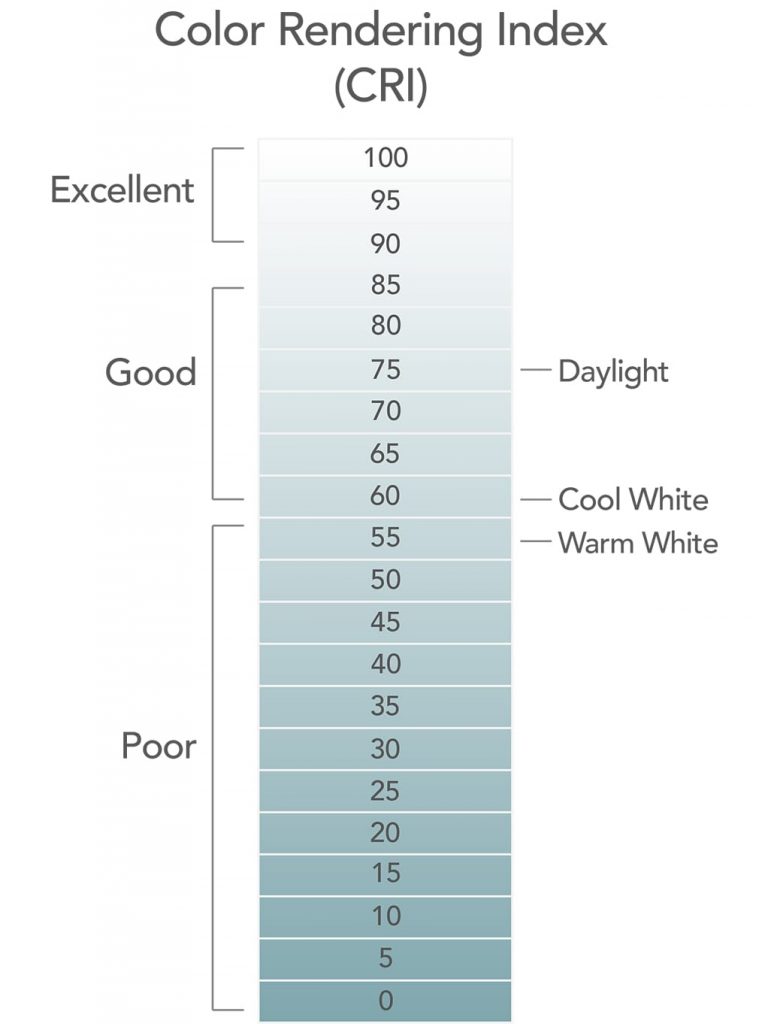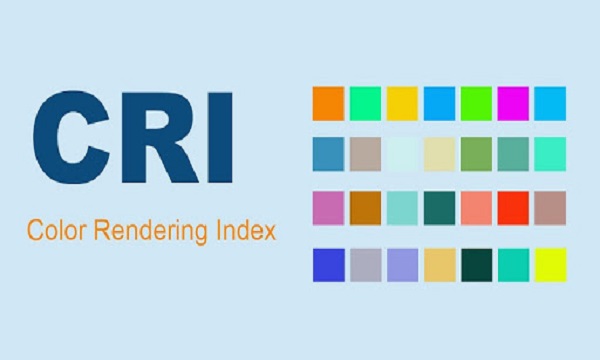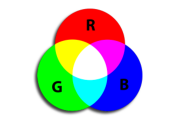Color Rendering Index
The color rendering ability of a light source to an object is called color rendering, which is compared with the appearance of the object under the same color temperature or reference light source (incandescent lamp or painting light).
The spectral content emitted by the light determines the light color of the light source, but the same light color can be composed of many, a few or even only two monochromatic light waves, and the color rendering of each color is also very different.
Light sources of the same light color have different spectral compositions, and light sources with a wider spectral composition are more likely to provide better color rendering quality. When there is little or no main wave reflected by the object under the reference light source in the light source spectrum, the color will produce obvious color shift. The greater the degree of chromatic aberration, the worse the color rendering of the light source. The color rendering index coefficient (Kaufman) is still a common method for defining the color rendering properties of light sources.
There are two kinds of color rendering
1) Faithful color rendering: A light source with a high color rendering index (Ra) must be used to correctly express the original color of the material, and its value is close to 100, and the color rendering is the best.
2) Effect color rendering: To clearly emphasize a specific color, and to express a beautiful life, you can use additive colors to enhance the color rendering effect. When illuminated by a low color temperature light source, the red color can be made more vivid. When illuminated by a light source with a medium color temperature, the blue color has a cooling sensation. When illuminated with a high color temperature light source, the object gives people a cold feeling.
The Classification of Color Rendering Index
When there is little or lack of the main wave reflected by the object under the reference light source in the light source spectrum, the color will have an obvious color shift. The greater the degree of chromatic aberration, the worse the color rendering of the light source. The color rendering index coefficient (Kau fman) is still a common method for defining the color rendering properties of light sources.
The color rendering index of incandescent lamps is defined as 100, which is regarded as an ideal reference light source. This system uses 8 standard color samples with medium chroma to test, compares the deviation degree of the 8 colors under the test light source and the same color temperature benchmark, to measure the color rendering index of the light source, and take the average deviation value Ra20-100, with 100 being the highest, the larger the average color difference, the lower the Ra value. Light sources with Ra less than 20 are generally not suitable for general use.
|
Index (Ra) |
Grade |
Color rendering |
General application |
|
90-100 |
1A |
Excellent |
Places where precise color contrast is required |
|
80-89 |
1B |
Good |
Places that require correct color judgment |
|
60-79 |
2 |
Normal |
Places requiring medium color rendering |
|
40-59 |
3 |
Low |
Places with low requirements for color rendering and small color difference |
|
20-39 |
4 |
Poor |
Places with no specific requirements for color rendering |
The theoretical color rendering index of incandescent lamps is 100, but there are many types of incandescent lamps in real life and their applications are different, so their Ra values are not completely consistent. It can only be said that it is close to 100, which is the lamp with the best color rendering. The Ra value of specific lamps can be seen in the table below.
Light source Color rendering index Ra
incandescent lamp 97
Daylight fluorescent lamp 80-94
white fluorescent lamp 75-85
warm white fluorescent lamp 80-90
Tungsten Halogen Lamp 95-99
high pressure mercury lamp 22-51
high pressure sodium lamp 20-30
metal halide lamp 60-65
Sodium thallium indium lamp 60-65
The method of measuring color rendering index is to measure its spectrum first, and then use the program to calculate it. The colors used in the color rendering index are 14 colors specified by CIE (International Commission on Illumination), marked as R1, R2, R3…R14, R15.
Their definitions are as follows:
R1, light grayish red.
R2, dark grayish yellow.
R3: Saturated yellow-green.
R4, medium yellow-green.
R5, light blue-green.
R6, light blue.
R7, lilac blue.
R8, lavender purple.
R9, saturated red.
R10, saturated yellow.
R11, saturated green.
R12, saturated blue.
R13, Caucasian skin color.
R14, leaves green.
What is R9 (saturated red)
R1 to R8 are called the typical display index, R9 to R15 are called the special color rendering index, and Ra represents the average color rendering index. Especially R9 (saturated red) is an indicator for judging the quality of red reproduction. For their applications, studios, studios, and other occasions where the skin color needs to be truly reproduced, the R9 value in the lighting spectrum must not be low. Museums, art galleries and other places require a high degree of true restoration of all colors, and the requirements for the values of Ra and R1-R15 are more stringent.
The US Energy Star (DLC) requires that the R9 in the color rendering index of LED lamps cannot be lower than zero.
The so-called R9 is the ability to display red in the color rendering index of the lamp. The larger the value, the higher the reduction of red. Simply put, the higher the lamp R9, the better and brighter the effect will be illuminated on occasions such as fruits and flowers. In particular, the R9 value of LED spotlights, which are the mainstay of lighting in shopping malls, can’t be negative.
So, why is R9 negative for so many lamps? The reason is cost.
To make the R9 value above 0, the phosphor powder ratio, especially the red powder, will be stricter, and the corresponding lamp beads will cost more. Of course, it is not ruled out that some companies sacrifice CRI in order to ensure light efficiency when they are unwilling to add costs, which leads to a low R9 value.
How to increase the R9 value of lamps?
There are no technical obstacles to upgrading R9. There are currently two main methods: white light beads plus red powder or red light beads. The common practice is to add red powder, but the price of red powder is very expensive. However, many packaging factories in the world cut corners or fail to meet the technology and reduce the red powder to fight for the price, so this is the real reason why the R9 value is mostly negative.
Therefore, when we discuss LEDs with high rendering index, we should not only consider the general color rendering index Ra, but also pay attention to the special color rendering index R9 for saturated red, and the special color rendering index for the four saturated colors of red, yellow, green, and blue. Color rendering index R9~R12. Because the research found that the general color rendering index Ra’s evaluation of the color rendering of LEDs is inconsistent with the visual evaluation. Generally, the visual color rendering of LED white light with a lower color rendering index Ra may not necessarily be poor. On the contrary, LED white light with higher Ra is not necessarily better in visual color rendering. Therefore, only when Ra and R9 have higher values at the same time can the high color rendering of the LED be guaranteed.









